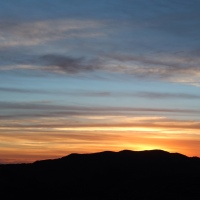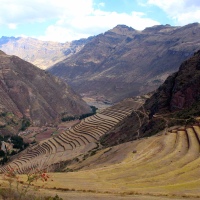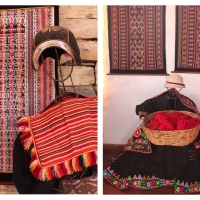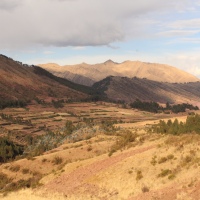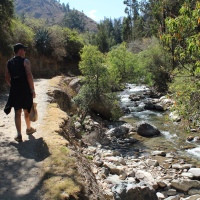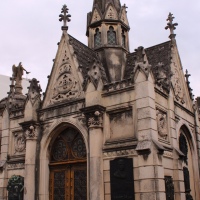The best thing about this city is the food. We finally found something worth eating – ceviche, the delicious dish that is the star of Peru’s culinary repertoire.

A sample of ceviche.
Wandering along the coast line, stopping to drink wine and eat seafood is a pretty awesome introduction to any new place. We decided to stay in Miraflores, the seaside suburb of Lima, and stopped for lunch at ‘La Mar’, one of Lima’s best cevicherias. Here we were treated to a selection of different ceviche dishes (variations of raw fish, chili and onions marinated in lime juice). Ceviche, where have you been all my life!?
Lima is also the home of the Pisco Sour, a cocktail that is popular along the west coast, and the Lima Sigh, a wonderfully sweet desert. A stop at the Gran Hotel Bolivar, where the Pisco Sour was conceived, is mandatory, and any decent restaurant around the central squares will spoil you with a Lima Sigh.
We weren’t in Lima for long, but we did manage to catch up with old and new friends, as well as wander around the shops and city streets. A referral put us onto a city tour bus, which we thought was the easiest and cheapest way to get around and see the sights all in one afternoon.
We went through the old squares in the center of town and saw the glamorous buildings from the colonial era, which still look magnificent.
The tour finished at the Museo Larco, which has one of the most incredible collections of Inca art anywhere in the world. The museum is a beautiful building of white washed walls and red flowers. Established in 1926, the Museo Larco hosts a vast collection of around 45,000 artifacts excavated from northern, central and southern Peru.

Photo taken from the courtyard.
Peru is one of the six cradles of civilization and the museum exhibits cover the many tribes that rose and fell over the last 5,000 years. Over time it is possible to see how the art became more sophisticated and how the different cultures influenced each other. The apex of this art is represented by the Incas, who amalgamated all of these influences as the empire spread across Peru.
We learnt a lot from the visit, and as it happens many of the best pieces from Cusco’s Museo de Art Pre-Colombino are on loan from this museum. We were so impressed with the collection that we bought a photographic book published by Museo Larco (which Mark used to design a tattoo on his back).
Lima itself was rather grey due to a haze that hangs over the city from April to November. It would have been nice to stay longer, but we were getting travel weary and were keen for some sunny beach time. So we boarded a dreadful overnight bus and escaped to the surfer’s paradise of Mancora!

The hazy shades of Lima.








































































